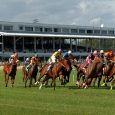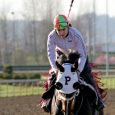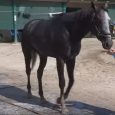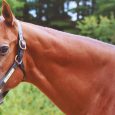This year, Kentucky Derby handicappers face a peculiar challenge (as if an overflow field of the best 3-year-olds in America competing at a distance they’ve never tried before isn’t daunting enough).
Of the 20 horses scheduled to compete, nearly half (nine to be precise) made their final Derby prep over an “off” track (one not labelled “fast,” which is the expected condition of the dirt surface at Churchill Downs on Saturday). This, of course, raises questions as to whether or not the individual performances in those races were actually a measure of ability or simply an indication of which horses “handled” the going and which did not.
For example, Exaggerator won the Santa Anita Derby over a sloppy Santa Anita Park racetrack — and he did so impressively. Yet, some immediately questioned his big win. After all, the son of Curlin had previously won the $1 million Delta Downs Jackpot over a muddy track and he was also second over the goo in the Breeders’ Futurity at Keeneland.
This got me to thinking: How predictive — or not — are Kentucky Derby prep races run over off tracks?
Now, ideally, I would have liked to have categorized tracks by their official designation — good, muddy, sloppy, wet-fast, etc. However, given that my Derby database only covers 24 years (1992-2015), such designations would mean a wholly inadequate sample size.
Before we continue, a few definitions are in order.
Impact Value (IV): A measurement of the number of times a winning horse shows a particular attribute compared to the number of times other entrants show that very same attribute.
For instance, if our study concentrated on horses between 0 to 99 years of age, we would expect the IV to be 1.00, as all race entrants — including the winners — would meet that stipulation. If, however, we were to focus on horses over the age of six, we would get an impact value of 0.84 (I checked). Simply put, this means that horses six years of age or older win fewer — 16 percent fewer, to be exact — than their fair share of races.
Odds-Based Impact Value (OBIV): Is similar to the IV except that the final odds, rather than the number of entrants, determine each horse’s probability of visiting the winner’s circle. Hence, if a horse favored at even odds wins, the OBIV would be 2.00 (1/0.5). Because takeout and breakage are part of the final odds, a neutral OBIV (comparable to an IV of 1.00) ranges from 0.80 to 0.85 (see chart below).
ITM: In the money (a finish of third or better).
OTM: Out of the money (a finish of fourth or worse).
So, with these metrics in mind, take a peek at the chart below:

Notice that racing over an off track last time does not appear to be a detriment on the first Saturday in May. Still, just to be sure, I decided to use the same parameters and extend my testing to a larger database, albeit not one confined to the Kentucky Derby.
The numbers were telling.

It becomes clear as the sample gets larger that there is a disadvantage in having raced over an off track last time — but it is negligible, especially if the horse in question finished in the money in that race.
So, if you like Nyquist, Exaggerator, Mor Spirit, Outwork or any of the other half-dozen colts who skipped over the slop or got mired in the mud last time, bet ‘em with confidence.




